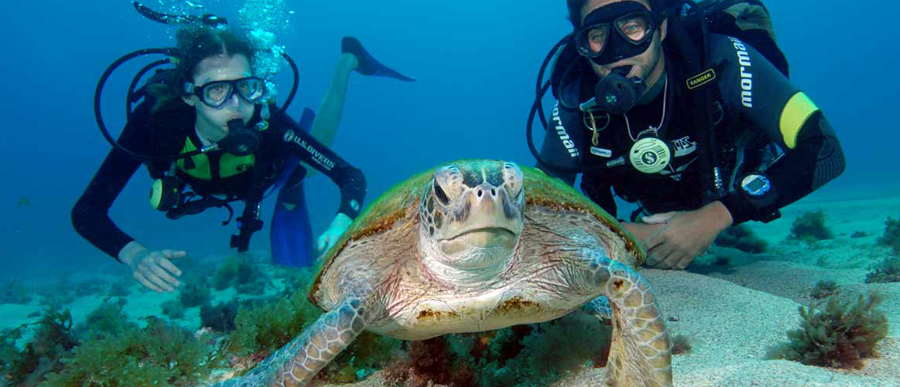
Ilha do Arvoredo
Arvoredo Island -on the south coast of Rio De Jeneiro is a diver’s paradise boasting deep sapphire blue waters and an explosion of marine wildlife to explore. Its coastal waters are teeming with sea-life including rare species of reptiles, an abundance of exotic reef fish and marine mammals. The island is part of Arvoredo archipelago formed by three islands including Gales and Deserta which boast some of the best dive spots in the world. Diving schools regularly operate in the area and accommodate for learners through to the more experienced. Waters are open year-round however the best time to visit is around Brazilian summertime from December to February. For basic and intermediate dives to about 80 foot depth temperatures range between 19-25 degrees C, getting colder the deeper you go, with visibility at around 30-60 feet.
Buzios
The resort town of Buzios is a vibrant mix of exotic culture, white sandy beaches and pristine waters, and is one of the world’s top 10 locations of incredible natural beauty. A magnificent barrier reef wall stretching along the western coast and crystal clear waters make it a haven for snorkelling and scuba diving, with some of the best launch spots including the cliffs of Joao Fernandes, Forno and Azeda. Equipment is readily available from dive operators in the area, and coaching sessions are offered for virgin-divers seeking their first thrill.
More than 20 totally serene beaches each with its own rustic charm dot the shoreline, and a sprawling variety of French, Brazilian, Japanese, Moroccan and Thai restaurants, along with an array of wildlife, make Buzios one spectacular tourist resort.
Ilha Grande
Lying off the coast of Rio De Jeneiro is Ilha Grande -one the most pristine hotspots of natural beauty in the world, with emerald green shores washing out into deep tranquil waters of the Atlantic. Vast areas of Brazilian lush tropical rainforest home to an explosion of wildlife including howler monkeys, caiman lizards and a whole host of colourful cackling birds melt into white sandy dunes and grass covered hills. The warm waters surrounding the island present a unique blend of tropical, sub-tropical and temperate-climate aquatic life, and are a major attraction for divers and snorkelers all year round.
Explorers can take to the emerald waters of the Green Coast where warm tropical rains and jungle foliage keep the water a mild 17 to 22 degrees C. Beautiful coral reef border the coastal wall of the island, and a number of underwater wrecks including a drowned helicopter and freight ship form an interesting underwater feature.
Arraial do Cabo
Arraial do Cabo is a bather’s haven owing much to its mild turquoise seas which lap up to pristine white shores. There is much to do here –one can sun themselves silly on the many gorgeous sandy beaches, sample delicious sea food from the bustling fishing villages or you could take to the waters where underwater currents stir up some of the best waves for surfers.
In fact Arraial is voted one the top diving and surfing spots in the world, where snorkelers can explore miles of crystal clear waters and its abundance of sea creatures. Situated just 15 minutes apart on a short bus ride or 10 minutes by boat, divers are treated to the rare sight of humpback whales which pass directly past the tidy shores.
Abrolhos
The Abrolhos archipelago is a gem of 5 tropical islands encrusted in swirling blue waters in the north east of Brazil. Golden sandy beaches border the mounds of rock which provide excellent launch pads for divers seeking to explore the rich underwater flora and fauna. The calm shallow waters offer a relaxed dive, with temperatures ranging between 17 to 25 degrees C. The islands are 4 to 6 hours from mainland so it is best to either make one-day trips or take a live-in boat for a few days, which aren’t expensive to hire. Staying on the islands is restricted; however the sleepy calmness of the waters offers excellent viewing of the aquatic life, including sea turtles, bright coloured coral, sea urchins plus whales which use the shallow waters as mating grounds.